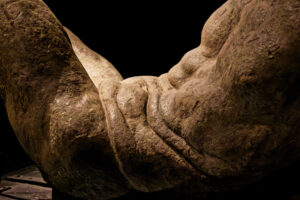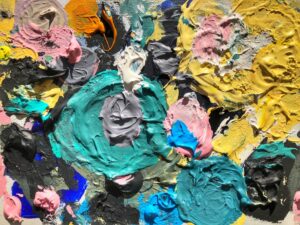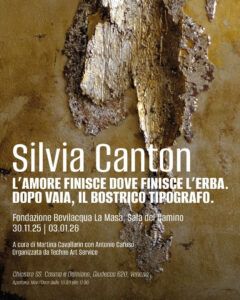In exploring ontological art, you immerse yourself in a fascinating field that combines philosophy and creativity. I will invite you to reflect on how art can not only represent reality, but also question the nature of existence itself. You will discover how ontological works of art challenge conventional perceptions and lead you to a deeper understanding of what it means to be. Prepare yourself for a journey that stimulates your curiosity and broadens your horizons in art practice and critical thinking.
Definition of ontological art
Ontological art refers to the exploration and representation of existential entities and their meanings. It is distinguished by its philosophical approach, addressing profound questions concerning the nature of being and reality. Whether you are an artist or a mere observer, you recognise that every ontological work invites reflection on the relationships between subject and object, existence and perception. This type of art challenges conventions, leading you to explore the essence of things themselves.
Fundamental concepts
Among the fundamental concepts of ontological art are the relationship between subject and object, the intentionality of the artist and the experience of the audience. These can be representations that challenge your perception, forcing you to question what it means to ‘be’. Your interaction with the work becomes part of the message, creating a dialogue between the art and your personal interpretation. Understanding these concepts allows you to better appreciate the emotional and intellectual impact of ontological art.
History and Development
Ontological art has deep roots in philosophy and art history, emerging as a significant movement in the 20th century. Through a fusion of philosophical ideas and artistic practices, it has evolved forms and techniques that make us reflect on the human condition. Exploring the historical avant-garde, you can see how artists such as Duchamp and Heidegger influenced this discipline, introducing new modes of thought and expression.
Throughout history, ontological art has gone through different phases and influences, from movements such as surrealism and existentialism to contemporary practices. This evolution has seen artists from every era questioning themes of being and reality, generating works that challenge classical conventions and explore the nuances of human experience. If you delve into the history of this art form, you will discover complex articulations and dialogues between philosophy, sociology and creativity that continue to influence your perception of art today.
The importance of perception
Perception plays a crucial role in ontological art, as it is through it that works are understood and interpreted. Your sensory experience is not just a passive act, but an active and dynamic element in the artistic process. Each work stimulates emotions, thoughts and reflections in you, profoundly influencing your view of reality and inviting you to explore the fundamental questions of existence.
The role of the observer
Your role as an observer is fundamental in ontological art. The work of art does not exist in a vacuum; it is completed through your gaze and interpretation. Your subjectivity and cultural background shape your understanding, making each experience unique. Therefore, you are a co-creator of meaning, combining your reality with that of the artist.
Philosophical implications
The philosophical implications of ontological art lie in its ability to question the very nature of reality and existence. Each perception challenges you to reflect on what you hold to be true and meaningful, prompting you to confront your own values and beliefs. Therein lies a transformative potential, for by comparing your experiences with those of others, you can expand your understanding of the world.
This analysis of philosophical implications leads you to explore fundamental concepts such as subjectivity, interpretation and relativism. Art, in this context, becomes a means to investigate existential questions and ethical dilemmas. It invites you to consider that your perception is not universal, but modulated by individual and cultural experiences. Through this lens, ontological art becomes a powerful tool for reflection and personal growth.
Techniques and methodologies
In ontological art, techniques and methodologies are fundamental to exploring the nature of existence. We invite you to consider how each artistic tool is used not only to create, but to reflect on what it means to be and to exist. The integrative approach of different artistic disciplines will help you expand your understanding and practice, making art a powerful vehicle for ontological contemplation.
Artistic approaches
When discussing artistic approaches in ontological art, I encourage you to explore the fusion of different forms of expression. Whether painting, sculpture or performance, each discipline brings with it a new dimension in the search for the essence of existence. This multidisciplinary approach allows you to draw on multiple sources of inspiration and to discover how the concepts of space and time interact.
Analysis tools
To better understand ontological art, it is essential to use analysis tools that allow you to break down and reflect on the works. These tools can include art criticism, philosophy and even psychology. Through them, you can sharpen your ability to observe and interpret the nuances of the works, bringing to light the deepest questions about existence.
The tools of analysis are essential for an in-depth understanding of ontological art. They will help you identify recurring themes, the techniques used and the emotions evoked by the works. For example, the use of art criticism can provide you with a framework to examine the artist’s intentions, while philosophy invites you to reflect on the metaphysical implications. By integrating these tools, you will be able to develop a richer and more articulate view of the works you study, thus deepening your artistic experience.
Interdisciplinary connections
Interdisciplinary connections are fundamental to understanding the essence of ontological art. These links between different disciplines, such as science, philosophy and language, offer new perspectives and broaden your understanding of the world around you. By developing an integrated approach, you can explore how all these areas can interact and enrich your artistic and cognitive experience.
Art and science
The interaction between art and science is a rich field of possibilities for you. Both disciplines seek truth, albeit through different methods. Art uses a visual and sensory language, while science is based on empirical and rational evidence. This synergy can lead you to new insights and a deeper understanding of reality.
Philosophy and language
Philosophy and language play a crucial role in your exploration of ontological art. Through language, you communicate philosophical ideas and concepts, allowing you to structure complex thoughts. Philosophy, on the other hand, analyses the foundations of language itself, questioning how words shape your perception of the world. In this way, your approach to art becomes not only an aesthetic experience, but also an intellectual exploration.
Criticism and controversy
In the world of ontological art, there is no shortage of criticism. Some scholars argue that this art risks becoming too abstract and distant from perceived reality. Others see it as a superfluous analysis with no practical application in the contemporary world. These controversies invite deep reflection on the meaning and value of art in today’s society, raising questions about what we really consider ‘art’.
Opposing visions
There are opposing visions regarding ontological art. On the one hand, critics emphasise its abstraction and difficulty of access for the public. On the other, proponents and practitioners see it as a pure form of expression that stimulates reflection on the meaning of existence. This dichotomy creates a vibrant and necessary debate in the cultural sphere.
Responses and defences
Proponents of ontological art respond to criticism by emphasising that its abstractness serves to free the imagination of the observer. They defend the idea that art need not necessarily be accessible, but rather stimulate an inner quest. In this context, ontological art is seen as a catalyst for new insights and depth of thought.
Furthermore, many ontological artists emphasise that art is ultimately a matter of personal experience and subjectivity. The defences of their practice focus on the importance of pushing the boundaries of aesthetic perception, encouraging the audience to explore their own interpretation of the proposed works. In this way, interaction with ontological art can become an individual journey, where meaning is not imposed, but discovered, enriching your understanding of the world and yourself.
Significant examples
In ontological art, you can see how some artists have distinguished themselves through their ability to explore the concept of being. These significant examples will guide you through works that challenge perceptions and stimulate deep reflections on existence and reality.
Key Artists
Among the key artists of ontological art, it is essential to mention figures such as Martin Heidegger, who influenced the philosophy of existence. Although not an artist in the traditional sense, his ideas have fuelled the works of many contemporary artists. Other important names include Joseph Beuys and Yves Klein, whose works focus on the relationship between art and being.
Emblematic works
Emblematic works in ontological art represent the synergy between concept and form. These pieces address complex topics, inviting deep reflection on existence. You can see how each work manages to convey the essence of being, evoking emotions and questions that go beyond the surface.
For example, ‘Beuys’ Large Sculpture’ explores the interaction between the artist and his audience, while Klein’s performances, such as ‘Blue Monopoly’, emphasise the power and significance of colour in the human experience. These works not only challenge aesthetic conventions, but invite you to reflect on your own existence and the meaning you attribute to your world. They are true catalysts of thought, stimulating a profound dialogue about what it means to be.
What is the essence of ontological art?
In conclusion, the essence of ontological art is based on the depth of being and the exploration of the concept of reality. Through an approach that challenges traditional conventions, ontological art invites you to reflect on your perception of the world and the interconnection between existence and representation. It offers you the opportunity to confront fundamental questions about the nature of being and your place in the universe, encouraging you to make personal and unique sense of your artistic experience.



